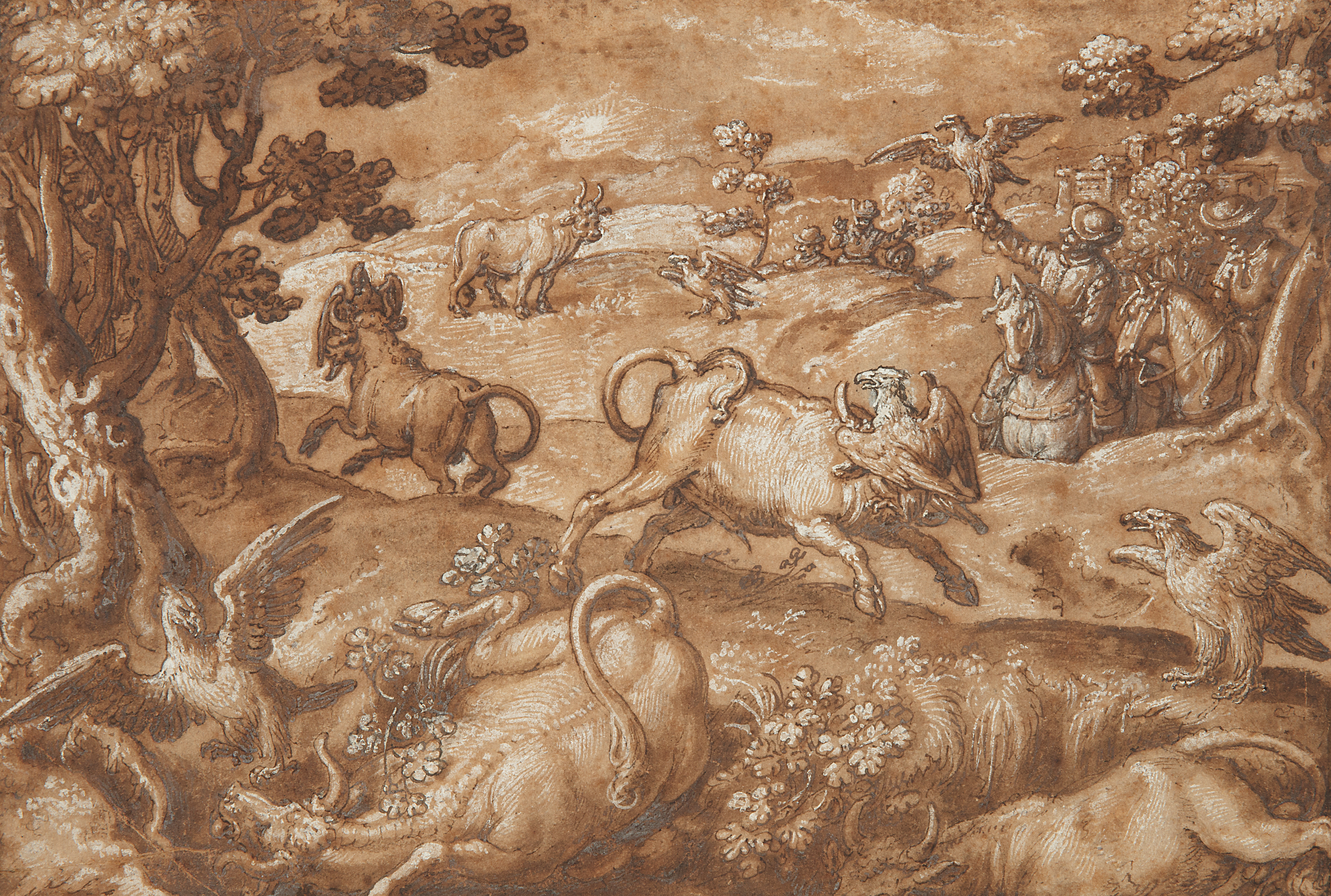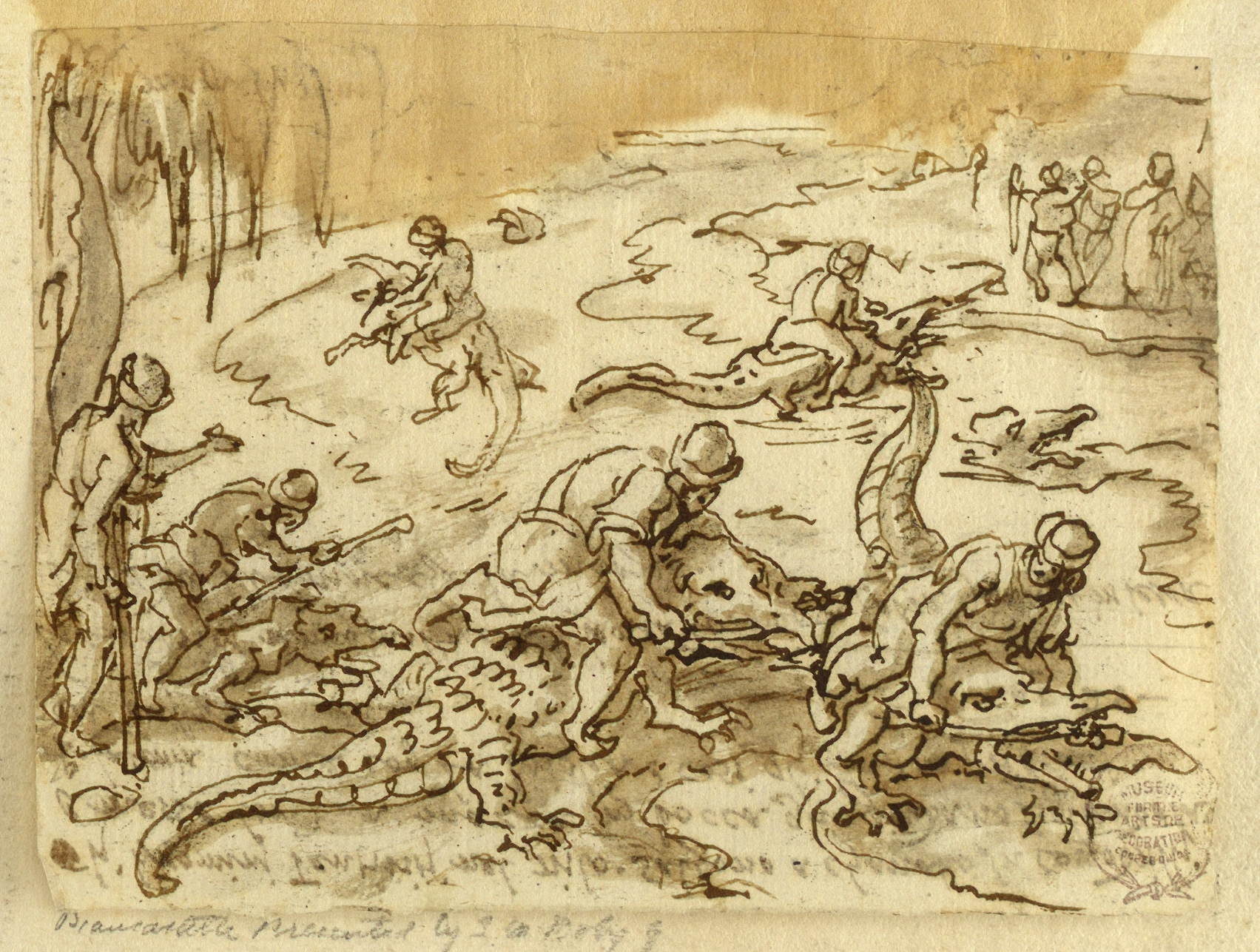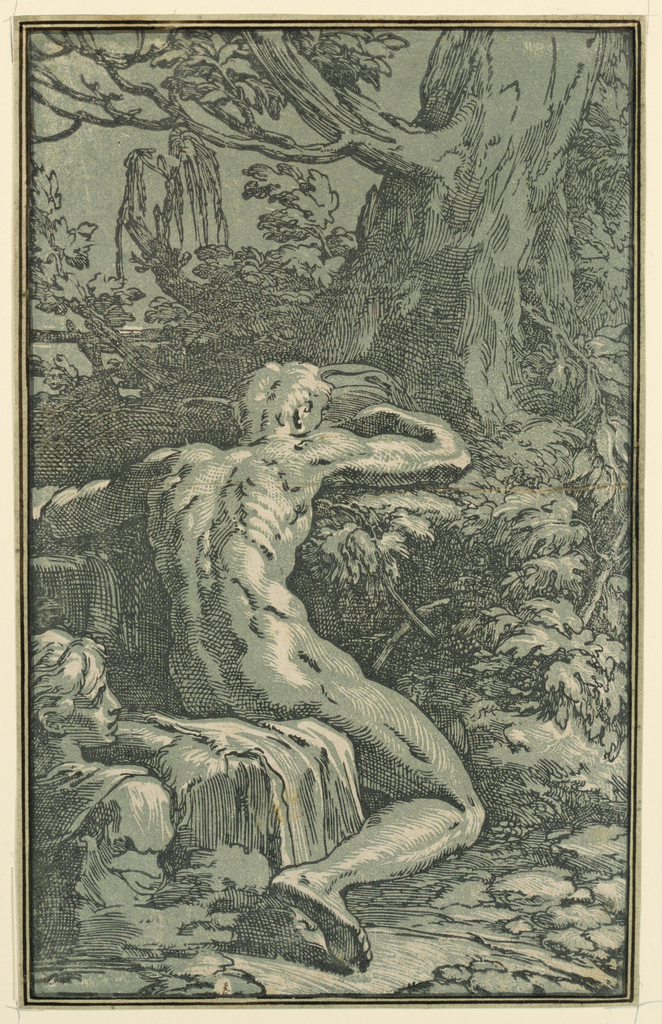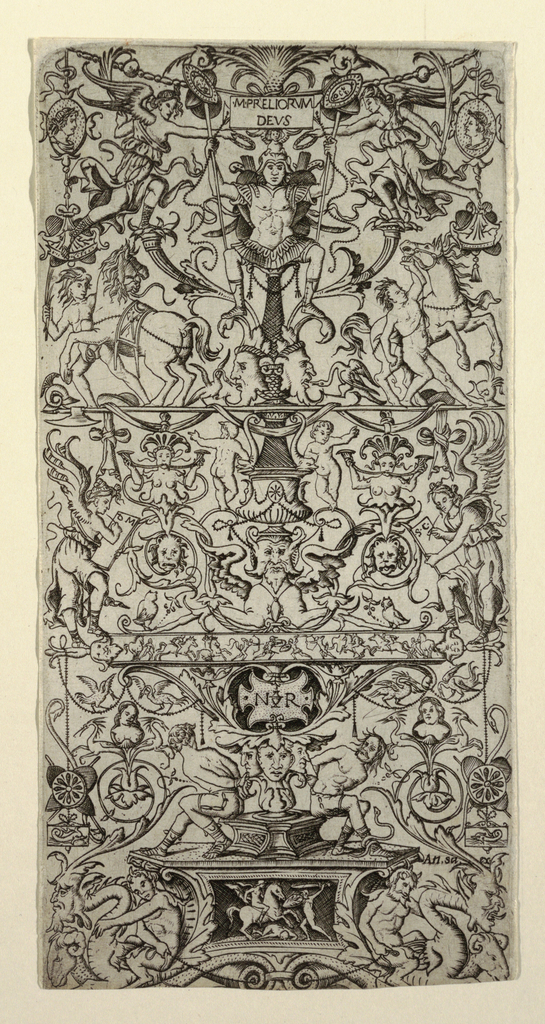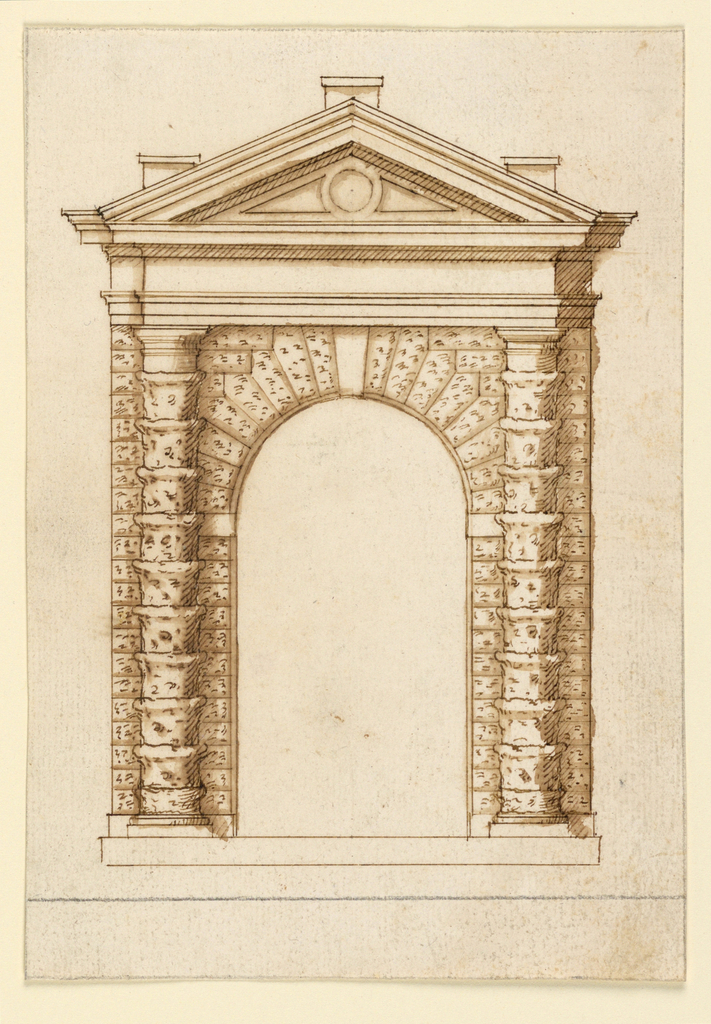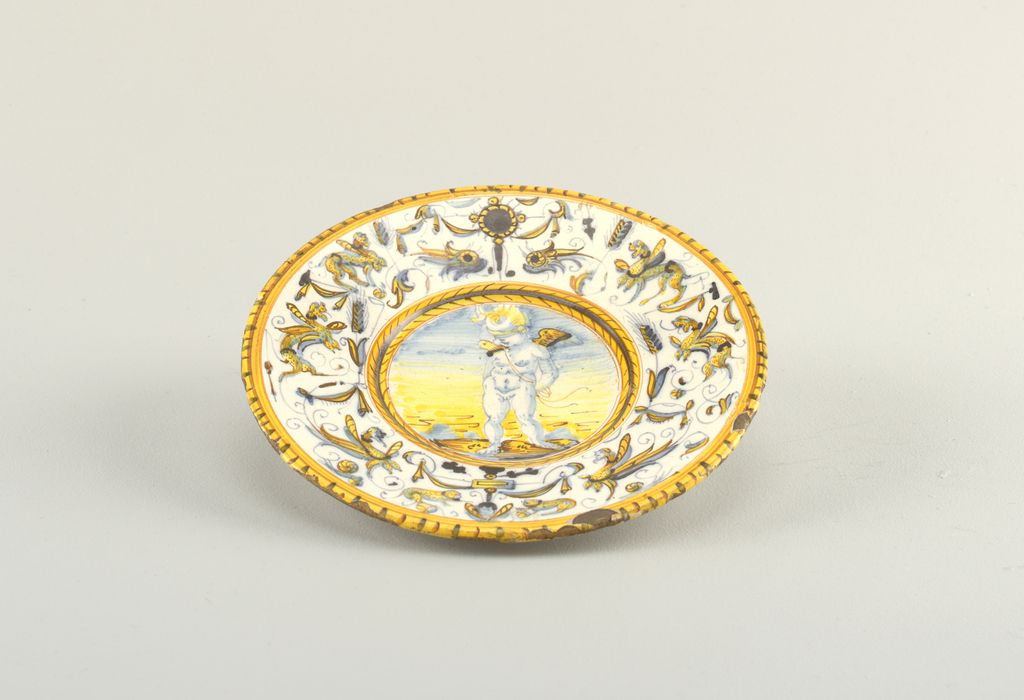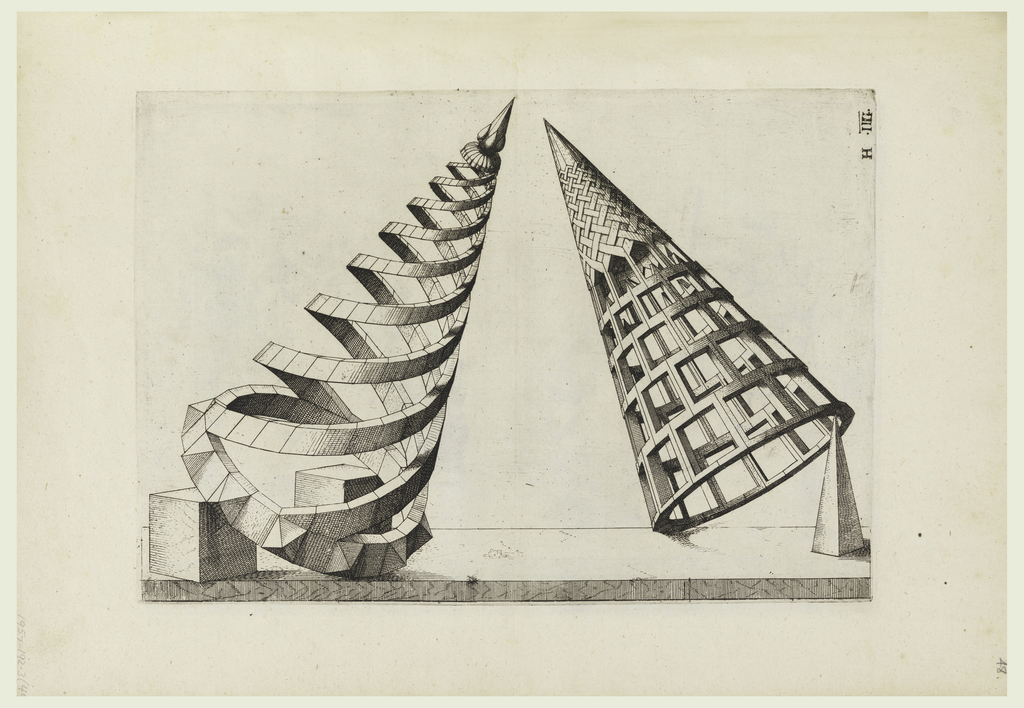Cooper Hewitt is delighted to add this extraordinary Renaissance drawing to the collection. A scene of “Men Hunting Bulls with Falcons,” it belongs to a series of (often outlandish) hunting images created by Jan van der Straet, called Stradanus (1523–1605). Cooper Hewitt is among the most important resources for the study of Stradanus, court artist...
How to catch a crocodile? In this drawing, the Flemish artist Jan van der Straet, called Stradanus (1523 —1605) shows us one particularly bold method. Hunters sit astride their prey, forcing long sticks between the crocodiles’ snapping jaws; companions armed with clubs wait nearby, ready to bludgeon the overpowered reptiles. The image isn’t based on...
This print, with its striking green hue, is the result of an innovative collaboration between two Italian Renaissance artists. Working together in Bologna in the late 1520s, the painter Francesco Mazzola (called Parmigianino, 1503-1540) and the printmaker Antonio da Trento (1508-1550) were early adopters of a new technique that allowed for the production of multicolored...
In last month’s Short Story, we feasted on dazzling jewelry designs from Cooper Hewitt’s collection. This month, Sarah Coffin, curator and head of product design and decorative arts, introduces us to Mr. and Mrs. John Innes Kane, donors of some of Cooper Hewitt’s most important decorative art pieces. Margery Masinter, Trustee, Cooper Hewitt, Smithsonian Design...
Have you ever wondered where you could find a spotted, two-legged creature with the body of a lizard, the ears of a goat, the wings of a bird and the claws of a chicken? How about a monster with the head of a dolphin, ears of acanthus leaves, the body of a snake, and a tail...
Rusticated masonry was first used in the classical world. It is characterized by stones cut with a deliberately rough surface, and wide sunken joints between blocks. The Ancient Romans typically employed coarse stone in public structures such as city walls and aqueducts. However, during the reign of Emperor Claudius (41 – 54 C.E.), rusticated stonework...
In celebration of Women’s History Month, Cooper Hewitt is dedicating select Object of the Day entries to works that celebrate women in our collection. We believe that this Italian Amorino Plate (also known as a coppa) dates from ca. 1600. The cupid (or putto) painted in the center of the plate, which is a shallow bowl,...
Have we fallen down? What is going on here? The perspective in this late 17th-century Italian drawing is so strange because it is meant to be viewed from below. This drawing was done in preparation for a painted ceiling, a frequent feature of the sumptuous palaces and grand churches built in Italy in the 16th-19th...
Translated as “Perspective of regular bodies,” Jamnitzer’s book exemplifies the overwhelming resurgence and appreciation of classical texts during the Renaissance. Not only does the artist present his drawings through a Latin introduction, but the regular bodies mentioned in the title are based on the five Platonic solids of Euclidean geometry: the tetrahedron, hexahedron, octahedron, icosahedron...
